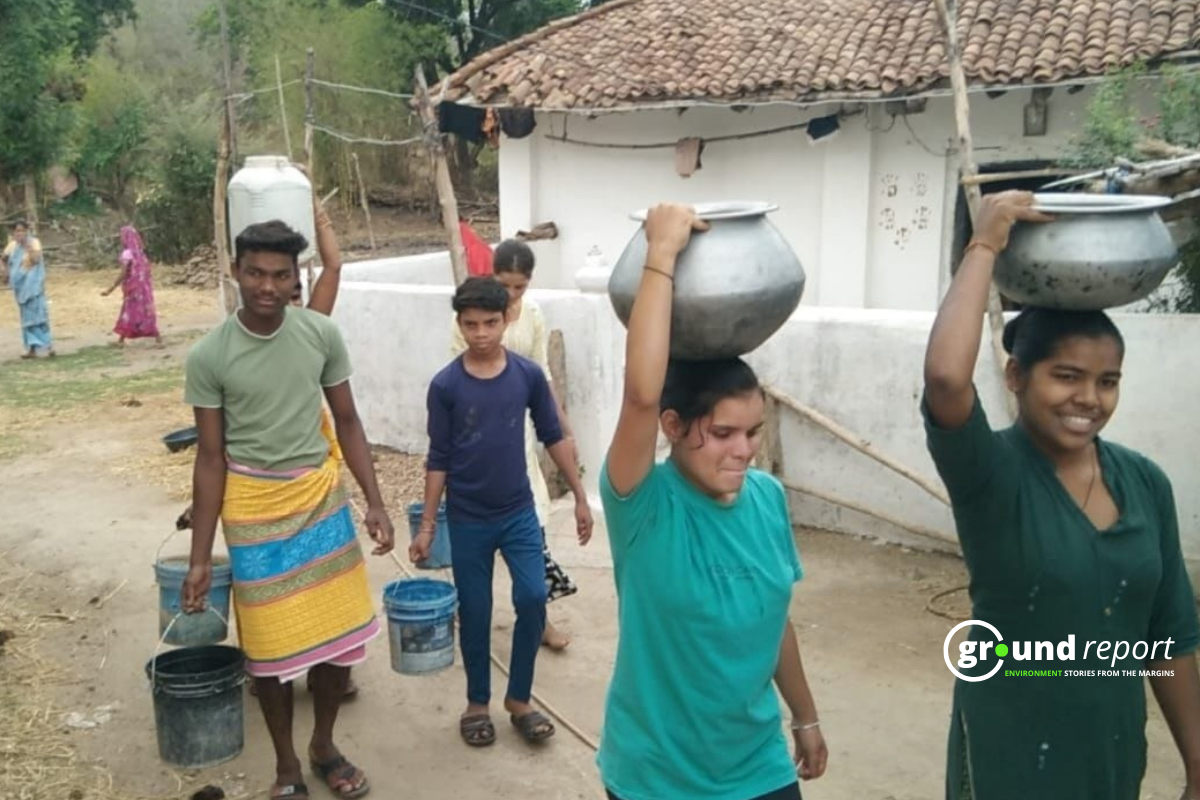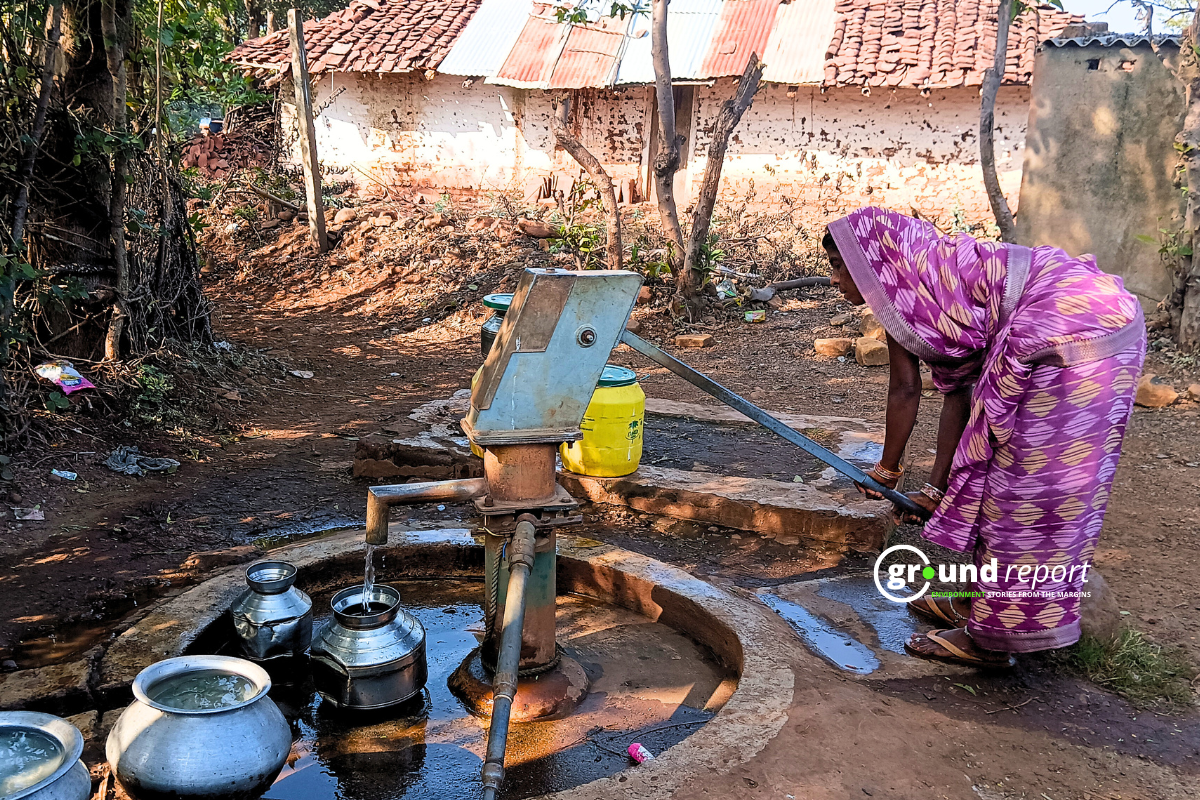Earth is the only planet known to us that has life. Amidst all the life-sustaining resources, water is the most precious. Every major civilization and cities are built near or around a water body. Millions of people in India are dependent on the Himalayas for their water needs. But how do remote Himalayan villages fulfill their water needs when they don’t have access to rivers?
Today, most of the villages have a water connection. But in earlier times urban and rural settlements were dependent on Naula or Dhara.
Structure
Naula is a water storage system in Uttarakhand. It is a small house-like structure that collects the spring water. Usually, Naulas have sloping roofs on all four sides. A tank is built in it for storage of spring water.
It is closed on three sides and a small opening is there on the front end. Stairs which are usually odd in number are given to reach the water. All naulas have a common design.
Naulas are mostly found on the hilly slope of the Kumaon Himalayas. Naulas provide safe drinking water and support the local ecosystem.
People use naula to bath, wash clothes and have a little get together. Elders in the mountains say that trees helped in choosing the location of Naulas.
Naulas are usually built around the area that have trees like Banj, Fauniyat, Kilonj, Kharsu, Bains, Kanyel, Manja as all these trees hold water. Trees like pine absorb a lot of water and make soil dry due to which Naulas can’t be built near them.
Uttarakhand has a forest area covering 34,000 sq km, which forms over 64% of the total geographical area of the state and 4% of national forest area.
Naula’s God connection
The ancestors of Himalayan communities followed some basic principles to keep water pure and pollution-free in these springs. These include considering water sources as “sacred”; constructing a temple at the source of water; not obstructing the velocity of water and using water wisely.
Idols of god can be found inside premises of a Naula. Holy trees like peepal and banyan were also planted near to a naula.
Impact of deforestation
But today, Naulas are now dying due to irregular and unpredicted rainfall, uncontrolled development and lack of local cultural knowledge.
People in the area don’t know anything about the construction of these water storage systems. Once these structures were considered marvellous in villages because of their beauty.
One of the main reasons behind the reduction of these springs is deforestation. According to global forest watch from 2000 to 2021, Uttarakhand lost 27 hectares of primary forest making up 15% of its total tree cover loss. In the same period, the total area of humid primary forest in Uttarakhand decreased by 0.29%.
The highest deforestation in the state is caused by mining activities, which cost about 8,760 hectares of land. This is closely followed by road construction, power distribution lines, and hydropower plant projects.

State of Naula’s today
These naulas become the target of popular attention only when modern water pipelines stop working. Today, thousands of naulas in Uttarakhand lie forgotten and decaying. Their degraded condition reflects a decline in community water management following the complete state take-over of water resources and the ecology, culture and traditions that supported these systems over centuries.
Ecological disruptions like deforestation, landslides, earthquakes, changing land-use patterns, increasing population pressure and other factors also disrupt the subterranean flows that feed naulas. Uncontrolled development and excess use of cement doesn’t let these springs recharge.
Reviving Himalayan springs is important to fight climate change. These himalayan springs sometimes help to form tributaries of big rivers. If these springs dry up, ultimately rivers will too.
What can be done?
- Systematic mapping of the spring should be done. Sources of these springs should be found out and preserved. Mapping will help to build a database that can be further used to make policies. Dried springs should be revived.
- Plantation of broad-leaved trees like Oak, Chestnut, Deodar, Burans, and Ficus species can help in revival of these springs.
Conclusion
These Naulas are a part of history. Naula in Suryakot (Almora) was built 1,000-years ago, Naula near Haat Kalika temple in Gangolihat (Pithoragarh) was build 700-years ago, Raja Ramchandra Dev,built the Garhsher Naula in Bageshwar district in the 7th century and the Baleshwar Naula was built by Raja Thorchand in 1272.
There was a time when people while travelling used to stop near these springs to take rest and drink water but today only warning can be seen “ Do not Drink this Water”.
Support us to keep independent environmental journalism alive in India.
Keep Reading
The costliest water from Narmada is putting a financial burden on Indore
Indore’s Ramsar site Sirpur has an STP constructed almost on the lake
Indore Reviving Historic Lakes to Combat Water Crisis, Hurdles Remain
Indore’s residential society saves Rs 5 lakh a month, through rainwater harvesting
Follow Ground Report on X, Instagram and Facebook for environmental and underreported stories from the margins. Give us feedback on our email id greport2018@gmail.com.
Don’t forget to Subscribe to our weekly newsletter, Join our community on WhatsApp, and Follow our YouTube Channel for video stories.








